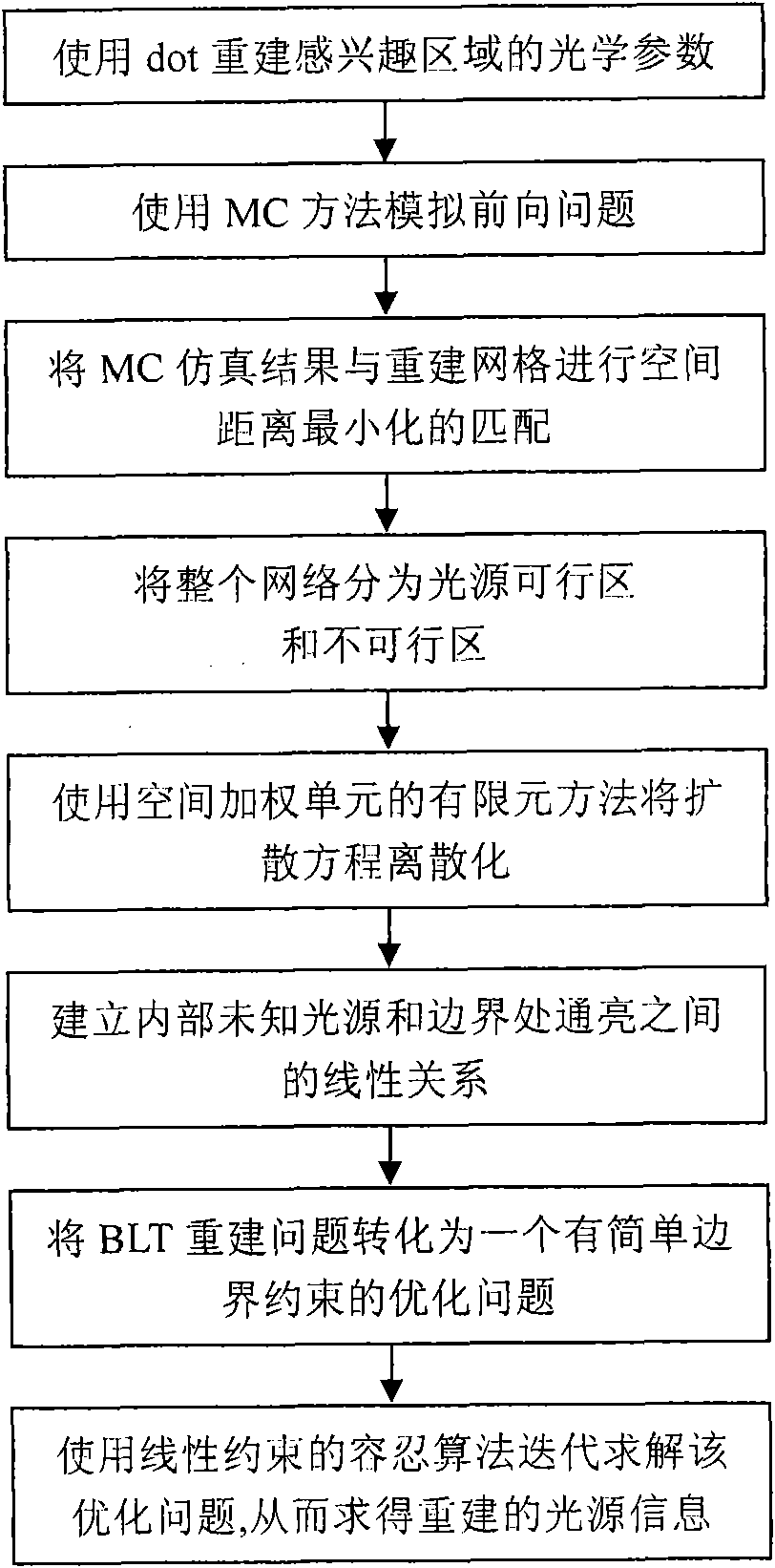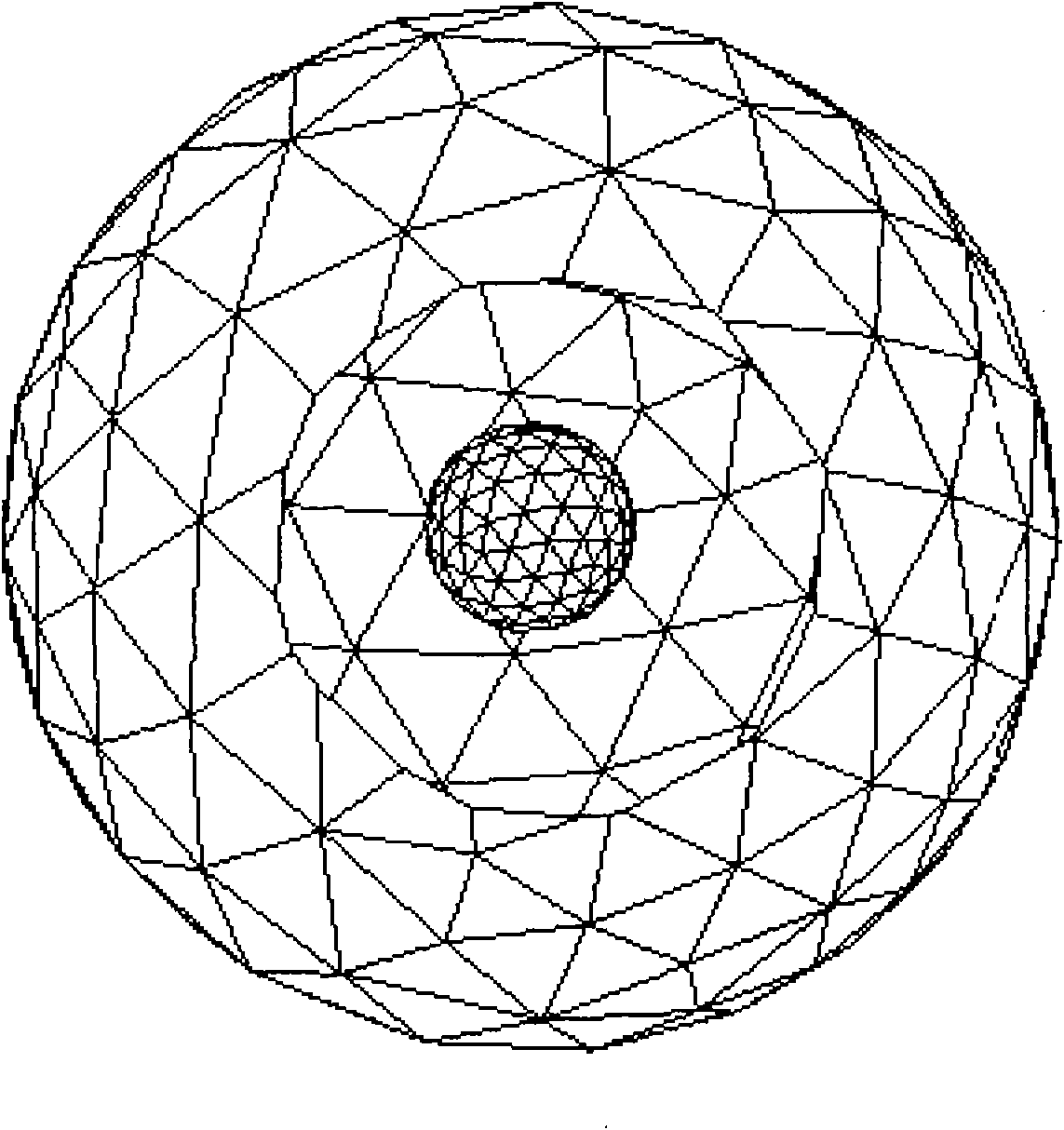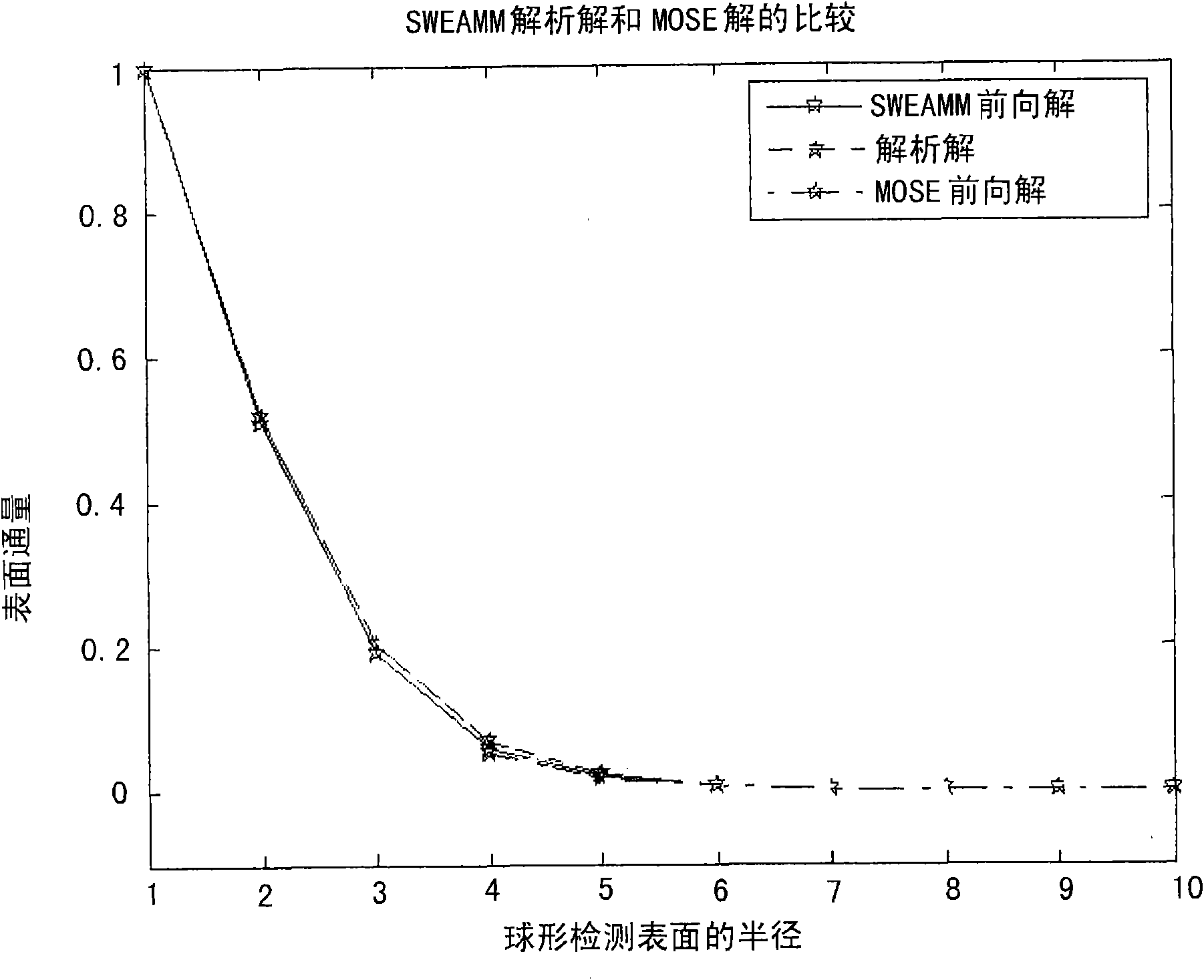Finite-element reconstruction method for space weighting of auto-fluorescence imaging
An autofluorescence and finite element technology, applied in the generation and application of fluorescence/phosphorescence, 2D images, etc., can solve problems such as difficulties and individual inaccuracies, achieve the effect of reducing computational overhead and solving quantitative reconstruction problems
- Summary
- Abstract
- Description
- Claims
- Application Information
AI Technical Summary
Problems solved by technology
Method used
Image
Examples
Embodiment Construction
[0027] The finite element reconstruction method applied to the spatial weighted unit of autofluorescence tomography provided by the present invention includes the following steps:
[0028] Step 1: Diffuse optical tomography uses the finite element method to simulate the transmission of light in the tissue, and obtains the integral of the corresponding signal in the time domain, and then uses the Levenberg-Marquardt method to iteratively reconstruct the tissue optical characteristic parameters of the region of interest Accurate spatial distribution.
[0029] Step 2: According to the optical signal distribution captured on the CCD, the distribution area of the real light source is limited, and the entire area is divided into a light source feasible area and a light source unfeasible area.
[0030] Step 3: Use the Monte Carlo (MC) random method to simulate the light transmission process in biological tissue, and match the simulation results on the MC grid with the reconstructio...
PUM
| Property | Measurement | Unit |
|---|---|---|
| radius | aaaaa | aaaaa |
Abstract
Description
Claims
Application Information
 Login to View More
Login to View More - R&D
- Intellectual Property
- Life Sciences
- Materials
- Tech Scout
- Unparalleled Data Quality
- Higher Quality Content
- 60% Fewer Hallucinations
Browse by: Latest US Patents, China's latest patents, Technical Efficacy Thesaurus, Application Domain, Technology Topic, Popular Technical Reports.
© 2025 PatSnap. All rights reserved.Legal|Privacy policy|Modern Slavery Act Transparency Statement|Sitemap|About US| Contact US: help@patsnap.com



